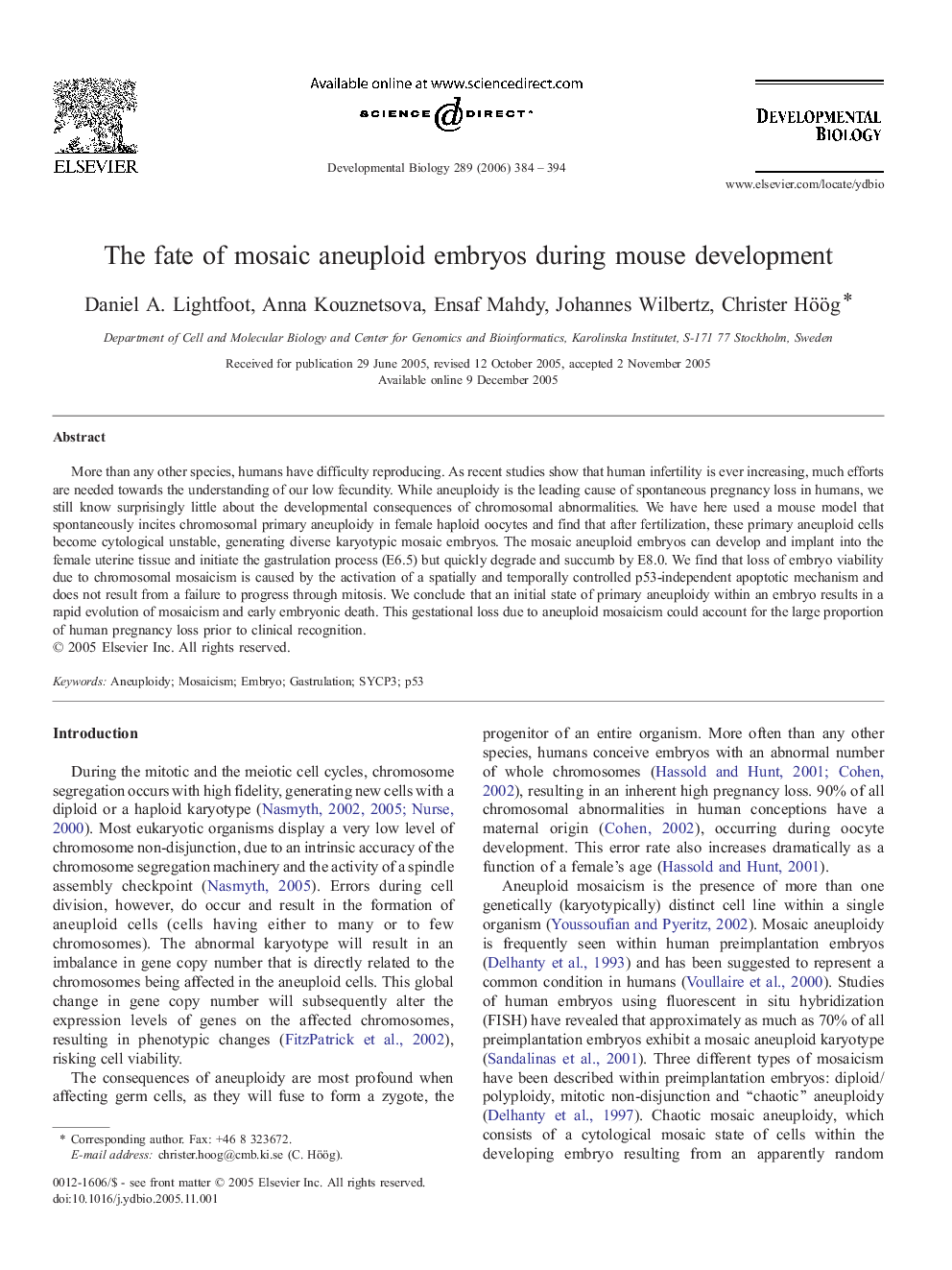| کد مقاله | کد نشریه | سال انتشار | مقاله انگلیسی | نسخه تمام متن |
|---|---|---|---|---|
| 2176224 | 1093868 | 2006 | 11 صفحه PDF | دانلود رایگان |

More than any other species, humans have difficulty reproducing. As recent studies show that human infertility is ever increasing, much efforts are needed towards the understanding of our low fecundity. While aneuploidy is the leading cause of spontaneous pregnancy loss in humans, we still know surprisingly little about the developmental consequences of chromosomal abnormalities. We have here used a mouse model that spontaneously incites chromosomal primary aneuploidy in female haploid oocytes and find that after fertilization, these primary aneuploid cells become cytological unstable, generating diverse karyotypic mosaic embryos. The mosaic aneuploid embryos can develop and implant into the female uterine tissue and initiate the gastrulation process (E6.5) but quickly degrade and succumb by E8.0. We find that loss of embryo viability due to chromosomal mosaicism is caused by the activation of a spatially and temporally controlled p53-independent apoptotic mechanism and does not result from a failure to progress through mitosis. We conclude that an initial state of primary aneuploidy within an embryo results in a rapid evolution of mosaicism and early embryonic death. This gestational loss due to aneuploid mosaicism could account for the large proportion of human pregnancy loss prior to clinical recognition.
Journal: Developmental Biology - Volume 289, Issue 2, 15 January 2006, Pages 384–394